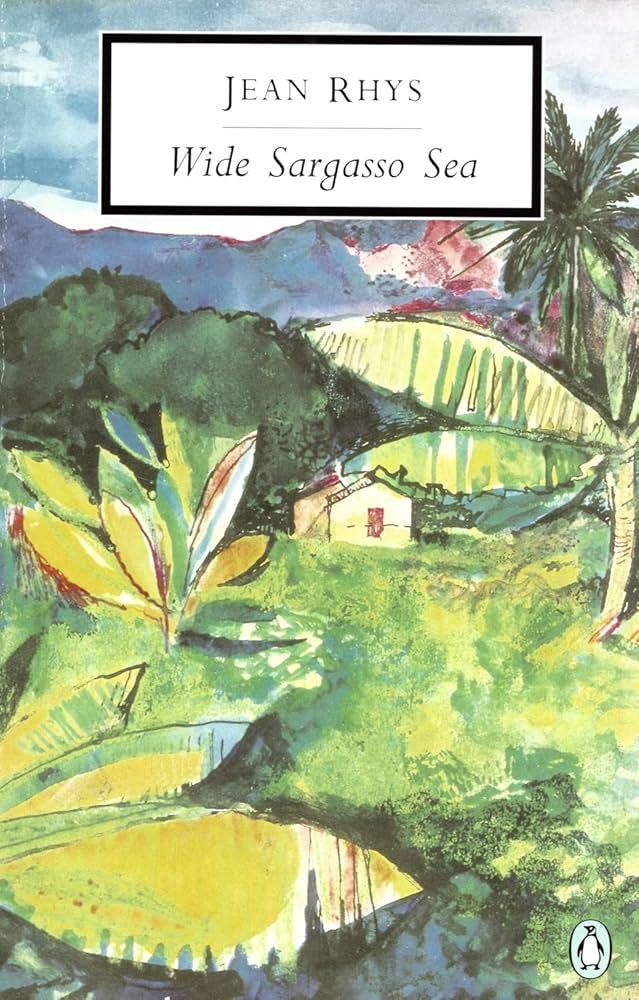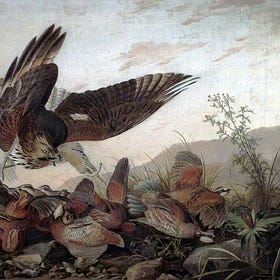When Everything is a Symbol, What Happens to the Plot? Reflecting on Jean Rhys’ Wide Sargasso Sea
Is there a such thing as too much when it comes to literary devices?
Most recently on The Novel Tea podcast, Neha and I discussed Wide Sargasso Sea as our Jane Eyre ‘adaptation.’ The book is a reimagining of the character of Bertha Mason, from her childhood in Jamaica, to her marriage to Mr. Rochester, to her time at Thornfield Hall.
Wide Sargasso Sea is rich with symbolism — there was lots to unpack when it came to Antoinette’s character (Bertha’s name in this book), the setting, racial tensions, and Jean Rhys’ characterization of Mr. Rochester. You can listen to the full episode here:
This was not an easy book to read. And as I thought about the text, researched the author’s life and the book’s historical context, and discussed its themes, there was a question that kept nagging at me: what did any of it mean?
I am happy to admit that there is a lot in this book that went over my head. And perhaps, if I took a fine-toothed comb to the book and really spent the time needed to decipher it, I would come away with a lot more.
But even though I love to analyze books and think about literary devices, I am not a scholar, or a teacher, or an academic. I am primarily a reader. And I read books to understand new worlds, to live in the heads of other people, to fall in love (or hate) with characters, to think in new ways, and to be shaken by a riveting plot.1
I once came across a piece of writing advice that warned against using too many similes.2 It said:
If everything is like something else, then nothing is anything at all.
This is very like how I felt about the symbolism in Wide Sargasso Sea.
If everything in the book is symbol, where does that leave the common reader?
Wide Sargasso Sea follows Antoinette, a young white Creole woman living in Dominica, who faces hatred and discrimination from both local Black peoples and overseas Europeans. When her mother is deemed mad and shut away, Antionette is married to a white man from England, and their marriage — and her mental sanity — begin to devolve.
There are so many symbols and motifs in this book (spoilers in this bullet list):
The wild and tropical environment, which serves to exaggerate the differences between Antoinette and Mr. Rochester, and also reflect back the wildness of Antoinette’s nature.
A fire that consumes Antoinette’s home in the first part of the book, which symbolizes the hatred her family faces from the people around them, and also serves to foreshadow the fire at the end of the novel.
The wide sargasso sea, a region of the Atlantic Ocean bound by currents. Unlike all other water bodies termed as ‘seas’, it has no land boundaries. Among other things, it represents Antoinette’s lack of stability, and her distance from both England and Mr. Rochester and everything they represent.
Tia, a neighborhood friend, seems to be less of an actual friend to Antoinette and more a symbol for the hatred directed towards Antoinette and people like her.
Coco the pet parrot, whose wings have been clipped to keep it in captivity, representing the confinement and captivity that Antoinette faces in her circumstances and in her marriage. When the house burns down, Coco is flightless and so cannot escape death (does this sound familiar to readers of Jane Eyre?)
Antoinette’s wedding ring, which soon after her marriage, falls off and rolls away, foreshadowing the breakdown of her relationship with Mr. Rochester.
And so on, and so forth
The more I think about this book, the more it feels to me that characters and plot points exist only to be symbols.
After Mr. Rochester and Antoinette are married, they start to have problems in their relationship, and at a certain point, Mr. Rochester decides to rename her — he starts calling her Bertha. I understand the symbolism of this choice: he is erasing her identity, claiming her for his own, and repeating the inhumane practices of slave owners.
But why did Mr. Rochester the person do it? Why did he choose the name ‘Bertha’?
Lots of research and an hour-long discussion didn’t provide any satisfactory answers.3
A book that is so heavily symbolic (think George Orwell’s Animal Farm) is more rightly called an allegory — it should not, I think, be treated primarily as a novel.
And while I do recognize the importance of this work, I also didn’t feel anything when I read it. Jean Rhys worked for over 30 years on this slim volume. And I wonder, as I read her sentences that, though beautiful, often feel devoid of (or at least distant from) emotion — I wonder if it is possible for a novel to be overworked. I wonder if I would have loved the version she’d created at the start, rather than what it became thirty years later.4
Readers, we’d love to know: have you read other books in which the literary devices seem to overpower the actual story? How do you think through these reading experiences?
— Shruti
Other Explorations of Literary Devices
If this is your first time reading The Novel Tea Newsletter, you may think I have an aversion to literary devices; nothing could be further from the truth! Here are some past essays from our archives in which we dive deep into symbols, motifs, and other literary devices:
Jane Eyre's Red Room
Where did Charlotte Bronte get the idea of the Red Room from? Plus some thoughts on what the Red Room inspired others to create
The Birds and the Books
Tracking symbolism through Jane Eyre, The Illness Lesson, Taylor Swift, and more
Double, Double, Foil and Trouble: Doppelgangers in Literature
As I sit down to write this newsletter, I see, in my computer screen, behind all the words and buttons, a dim yet ever-present echo of myself — a reflection, a mirroring of my face. The eyes, at once foreign and familiar, stare back at me, daring me to respond.
Shapeshifting Spirits: the Evolution of Ghosts in Literature
What do ghosts do in novels? Who are they, and what do they represent?
It's About Time!
We, as humans, are obsessed with time. Alarms, schedules, appointments, reservations - all dictate how we live. We are constantly trying to diminish the time it takes for certain tasks so we can make time for other, more important things. At the same time, we love to reminisce about memories just as much as we regret some past choices. Sometimes we can …
These are some reasons that come to me quickly, as I’m writing this essay. But the true question of why I read is probably so much more complex, and would probably need its own post to do it justice!
If only I could remember where I read it! If anyone knows where this advice comes from, please let me know so I can give proper credit.
We discuss this choice much more on the podcast episode — you can hear some other possible explanations there.
I suspect that I would have liked an earlier version much better; in our podcast discussion, Neha shares a poem that Rhys wrote from Rochester’s perspective while she was trying to understand the character. This poem was not included in the book, but we ended up enjoying the poem much more than any passages in the Wide Sargasso Sea. You can hear that poem, and more about the book, here.









Yes totally agree! I read it fully hoping and expecting to be immersed in Bertha's emotional world and to see Mr Rochester from a different angle, but just didn't feel like I got to know either of them. I also felt like I was missing something most of the time.. The descriptions of the landscape were super lush and evocative, but without the emotional depth it left me totally cold! It was almost universally disliked by my book club as well, reassuringly :).
I’ve never read it and my daughter who did Wide Sargasso Sea last year at school as part of their work round Jane Eyre thought it was painful. But Jean Rhys’s 1934 book Voyage in the Dark, while a little harrowing, is proper dazzling literature imho. I’m intrigued to have a look at WSS now you’ve said all this - and she did produce it much later, which underlines your point re overworking it.